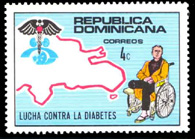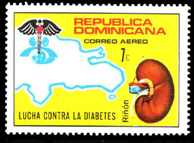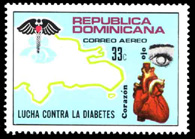



The management of the diabetic patient depends on teamwork and close liaison
between physicians, ophthalmologists, general practitioners and paramedical
staff including chiropodists, dieticians, screeners and many other personnel.
Only in this way will the risk factors discussed below be drawn to the attention
of the most appropriate health care worker.
.
12.1 Risk factors
Due to the chronic nature and insidious development of diabetic
complications many patients fail to appreciate the seriousness of the condition
and the life-shortening effects of the disease. in particular, previous confusion
within the medical profession on the role of tight diabetic control has been
swept aside by the clear evidence of the importance of establishing good
hyperglycaemic control to delay significantly the complications. This especially
true for retinopathy18.
.
It is equally the remit of all medical personnel caring for one or more aspects
of the diabetic state that they explain not only the value of good control of
diabetes but that diet, exercise, avoidance of cigarette smoking and attention
to weight will all have beneficial effects on the prevention of complications.
Even in cases of advanced DR with maculopathy, it is not too late to institute
a change of life-style which will benefit the end-organ disease. .
.
12.2 The young diabetic
A small sub-group of young, insulin-dependent diabetics appears to be
susceptible to a particularly rapidly advancing form of PDR. In some cases,
even extensive laser therapy fails to control the proliferative disease and
extensive vitreo-retinal surgery is performed with limited functional success.
It is unclear whether poor compliance and/or poor attention to their
diabetes is the main factor in the progression ot the disease or whether
other factors such as hormone dysfunctional particularly insulin-like grown
factor-1 (IgF-1), have a part in this serious condition. These patients require
special attention and monitoring the value of frequent, positive counselling
cannot be overstated.
.
12.3 Driving and visual fields
It is now recognized that panretinal photocoagulation may have damaging effects
on visual field function, in addition to the effects of retinopathy itself. In the UK,
the Driving and Vehicle Licensing Authority (DVLA) has set minimal standards of
visual field function which are required for permission to hold a Driver's License.
All patients who require retinal photocoagulation should be asked to provide
informed written consent to therapy as for any surgical procedure. It is the
ophthalmologist's duty to explain clearly the reasons for laser therapy, the type
of therapy to be undertaken and the likely effects on the patient's vision.
In the UK it is the patient's responsibility to inform the DVLA that he/she has had
laser therapy for diabetic retinopathy. If this is not possible, then the patient's
next of kin or GP should inform the DVLA of the patient's visual status. As a last
resort the ophthalmologist is duty bound to inform the Medical Adviser of the
DVLA.
.
12.4 Pregnancy
Patients with diabetes who are considering pregnancy should preferably attend
a pre-pregnancy clinic, with their husbands if possible where the risks of
pregnancy for the eyes can be carefully explained within the context of each
patient's particular state of health. In particular, the effects of tightening
control on retinopathy can be explained and the need for frequent monitoring
of the retinopathy throughout the pregnancy. In addition, the safety of
fluorescein angiography and/ or laser therapy if required during the pregnancy,
can be emphasized. The minimum recommendations suggested by the WHO are
that fundus examination should be performed at pre-pregnancy, at the diagnosis
of pregnancy, at the end of the first trimesters and in weeks 20-24 and 30-34.
More frequent examinations are recommended if active disease is detected.
.
12.5 Surgery
Much of the surgery for PDR, and even routine eye surgery eg for cataract in
non-PDR patients has special risks and variable outcome fro patients which
compares less well than similar surgical procedures on non-diabetic patients.
Patients may need considerable pre-operative counselling regarding the precise
surgical risks that they face and information on the likely visual result. In addition,
the impact of the final visual result on the patient's ability to continue monitoring
their disease as well as their ability to function independently in their home
environment, should be taken into account in any surgical decision which are
made.
This applies particularly to the elderly and infirm, may of whom live alone or in
sheltered accommodation. In these circumstances, discussion with the patients
carers may assist in reaching decision.
.
12.6 Social services for the visually handicapped.
In spite of appropriate treatment a small group of patients will fail to respond and
progress inexorably to severe visual impairment and blindness. It is important that
such patients are advised fully concerning the support services which are available
to them through the Social Services and in particular what benefits are available
to them to enable them to lead as normal a life as possible. In particular with
appropriate visual aids they should be encouraged to maximize the residual vision
which they possess. The ophthalmologists role is to ensure that such patients are
referred to the appropriate professionals and services for their individual needs.
Early registration with the Social Services will minimize the handicapping effects
of visual impairment through the use of appropriate low visual aids for use at home
and at work, including CCTV's (closed circuit television). Young people in particular
benefit from mobility and rehabilitation support services of this nature.